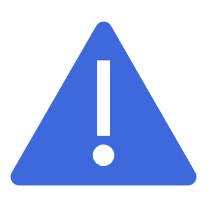Note: the following content was written based on the 10th edition of the MUTCD. It will be updated soon to reflect the 11th edition of the MUTCD, which became the current edition in December 2023.
 What is the MUTCD?
What is the MUTCD?

The Manual on Uniform Traffic Control Devices (MUTCD) may be one of the most-often used and least appreciated documents in the transportation engineering field. It is defined in the Code of Federal Regulations (23 CFR 655) as the national standard for all traffic control devices used on public roads, bicycle trails, and private roads open to public travel. As such, it provides criteria related to the following aspects of traffic control devices (TCDs):
- Meaning
- Design/Appearance
- Selection
- Installation/Placement
- Operation
- Maintenance
- Removal
While defined in the CFR as a national standard, the MUTCD provides mandates of varying levels (See Item Number 4 on Using the MUTCD). As such, not all of the criteria in the MUTCD create a requirement for TCDs.
 Who uses the MUTCD?
Who uses the MUTCD?
While the 2009 MUTCD does not formally define the intended audience for the document, the proposed content for the 11th edition of the MUTCD indicates that MUTCD content is intended for individuals who are duly authorized and qualified to conduct TCD activities. It also states that decisions related to implementation decisions for TCDs shall be made by individuals who have the appropriate levels of experience and expertise to make TCD decisions. Where the MUTCD indicates that implementation of a TCD is based on engineering judgment or an engineering study, the content for the proposed MUTCD indicates that an engineer is a professional engineer with appropriate traffic engineering expertise or someone working under the supervision of such an engineer.
 How is the MUTCD used to make decisions?
How is the MUTCD used to make decisions?
In making decisions related to the use of TCDs, individuals should consider:
- Safety: the expected impact of the device on the safety of users of the facility.
- Efficiency (also referred to as mobility or operations): the expected impact of the device on the mobility of the users of the facility.
- Resources (also referred to as cost-effectiveness): the consideration of the expected benefits of the device in comparison to the available resources of the agency or facility owner.
- Enforcement: the ability of law enforcement to address compliance with the TCD.
 What documents support the MUTCD?
What documents support the MUTCD?
The applicable MUTCD varies by state. A knowledgeable MUTCD user will not only be familiar with the MUTCD language applicable in that state, but should also be familiar with the pertinent content from the following sources:
- State Documents: Related TCD practice documents applicable to the state including manuals, policies, and typical drawings/diagrams, among others.
- Interim Approvals: FHWA approvals that allow interim use of a new TCD pending official rulemaking at a later date.
- Official Rulings: The mechanism by which FHWA identifies requested changes, experiments, and interpretations related to the MUTCD.
- Interpretations: Interpretations issued by FHWA to clarify or interpret the intent of MUTCD content.
- Federal Register Notices: Notices of Proposed Amendments and Final Rules published in the Federal Register that provide background on the basis for changes to the MUTCD.
- State Traffic Laws: Each state has a set of traffic laws that establish regulations for operating on the roadways in that state. Portions of these state traffic laws specifically address TCDs. While there are similarities between traffic laws across the states, there are also some differences between the states. MUTCD content is based on the Uniform Vehicle Code (UVC) and the MUTCD user should be aware of the differences between the UVC and the traffic laws in their state.
- State Engineering Laws: Each state has a law that establishes the requirements to become a professional engineer in that state and the practice of engineering in the state. There are differences in the state laws and a practitioner should be aware of the requirements in their state when making TCD decisions.
- Compliance Dates: When the MUTCD changes the criteria related to a specific TCD, existing installations in the field of that device are typically updated as part of a systematic upgrade of the facility and/or substandard TCDs. However, the introduction of the 2009 MUTCD contains a table that establishes deadlines for implementing selected provisions of the MUTCD.